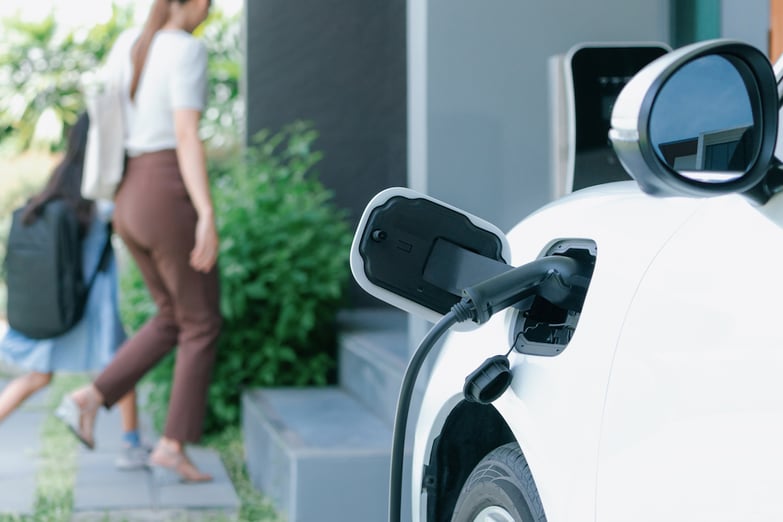Back to articles
Improving EV charging networks with cellular IoT

The global transition to electrified personal transport is gaining momentum, with consumer electric vehicles (EVs) leading the way. According to the International Energy Agency (IEA), EV sales exceeded 10 million units in 2022.
That total made up 14 percent of all new cars sold - up from less than 5 percent in 2020[1]. This shift is being driven by a combination of financial incentives and regulations, as governments across the globe commit to an EV future as part of a drive toward “net zero” carbon emissions.
But there’s a danger that growth could be stifled by a significant issue: across the globe, EV charging stations lag vehicle sales.
The need for accessible EV charging
In countries where EVs are already popular, there tends to be well developed infrastructure; for example, Norway (where 86 percent of new cars are EVs) and Iceland (72 percent) have widespread charging networks. In contrast, the U.S. is falling behind in EV adoption—with the cars making up only five percent of new sales—removing the commercial incentive for companies to build charging infrastructure.
Currently, the number of U.S. EV charging stations falls well below the availability of traditional gas stations, even when considering the size EV fleets compared to gas-powered vehicles. According to Motor.com, the U.S. averages about 104 gas pumps per 1,600 road kilometers, compared to just 22 EV charging ports[2]. The problem is made worse because it takes just minutes to fill a car from a gas pump—making it quickly accessible to the next vehicle in the line—while EV charging is much slower even with the latest generation of fast chargers.
Avoiding flat batteries
The limited availability of charging stations means that the last thing any EV driver needs is poor equipment reliability. Because EV drivers tend to plan road trips around the relatively few available charging stations when the roll up at one, they need it to work. And it’s not just consumers, governments too expect well maintained networks. For example, a new UK law, the Public Charge Point Regulation 2023, requires each charging point to be 99 percent reliable.
To keep public charging points functioning that dependably, they need to be continuously monitored so that any problems can be quickly identified and fixed. Better yet, the monitoring could be used to address problems well before they result in equipment failure.
Such monitoring requires robust, country-wide, and long-range wireless connectivity to collect data on the availability and condition of charging stations. And the only standards-based technology that can do this is Cellular IoT. The technology enables companies to send EV charger data to a Cloud platform for remote analysis and to determine if the charger needs a visit for a service.
Wireless connectivity for home charging
The year-on-year increase in range of EVs promises to make home charging just as significant as public charging because it means that for all but the longest journeys, consumers can top up batteries in their own garage. This private market is made up of a range of individual suppliers, with two main types of home chargers. One type is low-cost and without Internet connectivity; despite the price advantage, this type may become less popular in the future due to inconveniences such as not being able to take advantage of flexible tariffs.
The other popular type of home EV charger can access the Internet. The charger can be directly connected using Cellular IoT; alternatively, the charger can access the Internet via home Wi-Fi. With the introduction of the latest version of the wireless tech, Wi-Fi 6, the chargers can be easily integrated into the smart home ecosystem. This is because Wi-Fi is a key constituent of Matter, a smart home standard backed by companies such as Apple, Google, Samsung, and Nordic Semiconductor.
As an integral part of the smart home, the domestic EV charger can, for example, ask the owner if a full charge is necessary for tomorrow because on that day of the week the car is usually only driven on short journeys. If a full top-up is asked for, connectivity allows the charger to determine precisely when to switch on charging to take advantage of the cheapest tariff.
EV charging is set to become big business
While public charging infrastructure remains relatively scarce, as EV ownership grows, so will the supporting network. And that will mean hundreds of thousands of chargers spread across entire countries. Cellular IoT is the only LPWAN capable of the coverage and reliability demanded by such huge charging networks. But more than that, cellular IoT brings other benefits.
According to report published by telecoms services and equipment provider, Ericsson, connectivity brings significant business opportunities for EV charging companies and the related ecosystem. By connecting charging stations with cellular IoT, EV charging companies are better positioned to effectively manage their orchestration, administration, and maintenance. That in turn keeps the complex ecosystem of stakeholders—including drivers, hardware and connectivity providers, utility companies, automotive OEMs, and asset owners like parking operators, city authorities, and homeowners—satisfied.
EV’s promise a greener future. But each driver wants reassurance that when they need to recharge their vehicle’s batteries, a fully functioning charger will only be a short hop away. Wireless technologies like cellular IoT and Wi-Fi will not only make it simple for service providers to keep their chargers in good order but will also help them efficiently and remotely manage huge charger networks.
References
1. Global EV Outlook 2023; www.iea.org/reports/global-ev-outlook-2023/executive-summary#
2. Study explores EV charging vs gas station density in the U.S.; www.motor.com/2023/08/study-explores-ev-charging-station-vs-gas-station-density-in-the-u-s


